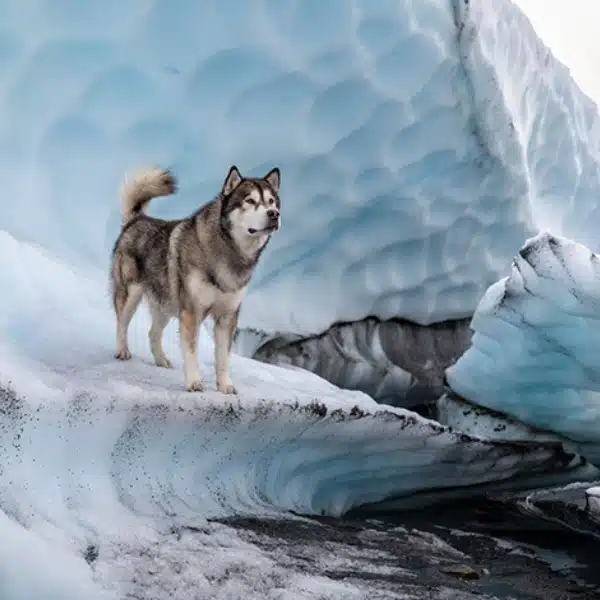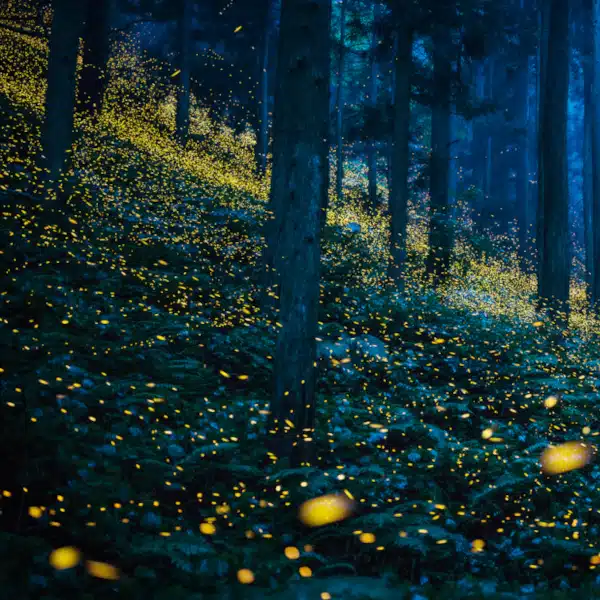
“Days in the Sun” by Regina Valkenborgh (Photo: Regina Valkenborgh / University of Hertfordshire)
The London 2012 Summer Olympics had its closing ceremonies in August 2012. Just one week after the athletes dispersed, a masters student in fine arts began a project at the University of Hertfordshire in the UK. Regina Valkenborgh crafted a pinhole camera out of an aluminum beer can, duct tape, and light-sensitive photographic paper. Affixed facing skyward on the side of the university's Bayfordbury Observatory, the camera was forgotten—weathering the elements for eight years and one month. David Campbell—the observatory's Principal Technical officer—finally got around to removing the camera this fall. Inside, he discovered the longest-exposure image ever captured, showing eight years' worth of solar paths across the sky.
As a Fine Art student, Valkenborgh was interested in using old technologies to capture images. She experimented with pinhole cameras, using the technique known as camera obscura. Her beer-can camera is an extreme example of this technique. A small hole in a light-tight box (or can) allows the light of the outside world to pass through. The image of the outside world is inverted and projected into the darkened space. Early photographers learned to capture this optical phenomenon by placing light-sensitive film behind a small pinhole, just as Valkenborgh did. While many pinhole cameras require exposure lengths of several seconds or more, the beer-can camera's eight-year exposure—entitled Days in the Sun—is the longest on record.
Over the eight years that the camera remained affixed to the observatory, the photographic paper inside captured what is known as a solargraph, showing the passing of the sun in arcs across the sky. The highest arc is the Summer Solstice; the lowest, the Winter Solstice. Some days likely left little impression upon the paper due to cloudy weather. Passing people or trees are not visible, only the sun's bright light. It is possible that the paper recorded a full 2,953 trails of the sun, according the the University's statement.
Valkenborgh's camera was never meant to have an eight-year exposure. Luckily, the moveable observatory carrying it returned to the exact same orientation every day. The camera recorded the view from where it sat over a length of time equivalent to 4% of the entire history of photography, according to a tweet from the observatory. In doing so, the camera made history itself for its unlikely (and unplanned) survival. While Valkenborgh's solar image stands as the longest known exposure of an image, other photographers experimenting with pinhole cameras hope to set new records. In 2015, Jonathon Keats placed his Millennium Cameras—with 1,000-year shutter speeds—to watch over Lake Tahoe for what seems like an impossible eternity. For many, the fascination and challenge of pinhole cameras and long-exposure photography is capturing a changing world constantly in motion.
Masters student Regina Valkenborgh crafted a pinhole camera in 2012 out of an aluminum beer can, duct tape, and light-sensitive photographic paper. She faced it skyward on the side of the University of Hertfordshire's Bayfordbury Observatory, where it was forgotten till this year.
The beer-can camera was attached to one of the telescope domes by Fine Art student Regina Valkenborgh in August 2012 – in the week after the closing of the London 2012 Olympics, until finally being opened in September 2020. pic.twitter.com/R4Rdz7XSDO
— University of Hertfordshire Observatory (@BayfordburyObs) December 10, 2020
“Days in the Sun” is perhaps the longest-exposure photo on record, recording up to 2,953 arcs of the sun's path across the sky.
This is the view today from where the camera was mounted. On the left is the observatory’s oldest telescope – built in 1969, and on the right is an atmospheric research gantry constructed halfway through the exposure. pic.twitter.com/WLRTASz4kC
— University of Hertfordshire Observatory (@BayfordburyObs) December 10, 2020
Related Articles:
How the Development of the Camera Changed Our World
Wildlife Camera Trap Unexpectedly Snaps Funny Photo of Mystery Man Striking a Pose
Guy Invents an Instax Drone Camera That Takes Instant Aerial Photos
Long-Exposure Photos Turn Rock Climbing Routes Into Epic Rainbow Bursts Across the Landscape






















































































